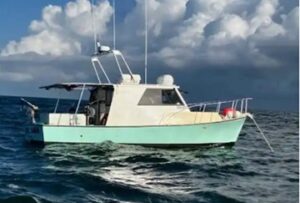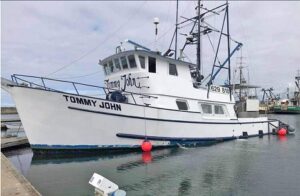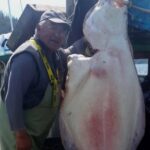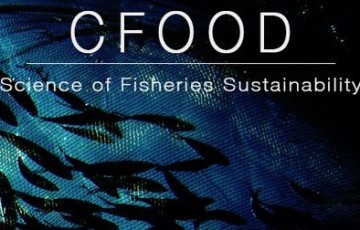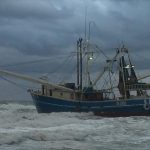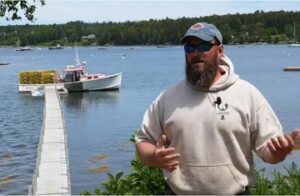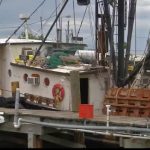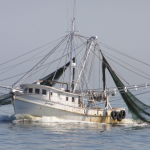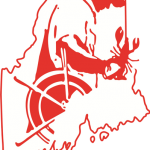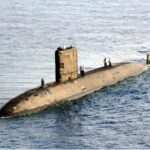Daily Archives: August 31, 2016
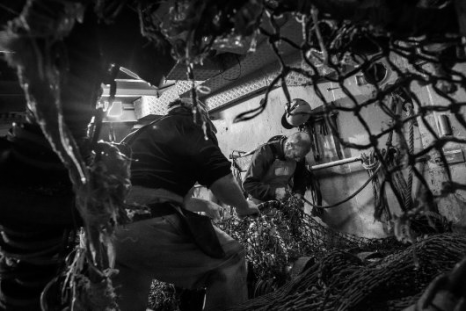
Fishermen in the north-east Atlantic: living at the pace of the trawl catch
Huge factory trawlers plough the various fisheries, depending on the product sought, to supply major distribution outlets. This large-scale commercial fishing, also known as industrial fishing, is heavily subsidised by public funds. The industrial trawlers of today are out-and-out floating factories where the work is wholly designed and organised around production line methods. The seafarers remain at their workplace for 27 days. During this time, their lives, eating and sleep patterns depend on the work to be done. The north-east Atlantic is the world’s fourth largest fishery. Mainly exploited by European ship owners, this area accounts for over 70 per cent of EU catches. Photojournalist Pierre Vanneste spent two 15-day stretches at sea with industrial fishermen, to report on the day-to-day reality of life on board. Read the story here 20:35
Zeldin: Congress needs to block president’s latest Marine Monument plan
 Recent Marine Monument designations proclaimed by the Obama Administration have been the largest in U.S. history. In 2016, President Obama declared a 490,000 square-mile area of water in the Pacific Ocean as a National Marine Monument after receiving little public input and through a process where transparency was severely lacking. As a result of this new monument, recreational fishing was severely limited and commercial fishing was completely banned, hurting fishermen in the Pacific Ocean. Now, important fishing areas in the Northwest Atlantic, where fishermen from Greenport, Montauk, and throughout the entire New York and New England region have worked for centuries, are under consideration for a National Marine Monument designation. As the president is pushing to apply this power to large areas of ocean in the Northwest Atlantic, he is threatening to shutdown thousands of square miles of ocean from Long Island fishermen. Read the rest here 15:55
Recent Marine Monument designations proclaimed by the Obama Administration have been the largest in U.S. history. In 2016, President Obama declared a 490,000 square-mile area of water in the Pacific Ocean as a National Marine Monument after receiving little public input and through a process where transparency was severely lacking. As a result of this new monument, recreational fishing was severely limited and commercial fishing was completely banned, hurting fishermen in the Pacific Ocean. Now, important fishing areas in the Northwest Atlantic, where fishermen from Greenport, Montauk, and throughout the entire New York and New England region have worked for centuries, are under consideration for a National Marine Monument designation. As the president is pushing to apply this power to large areas of ocean in the Northwest Atlantic, he is threatening to shutdown thousands of square miles of ocean from Long Island fishermen. Read the rest here 15:55
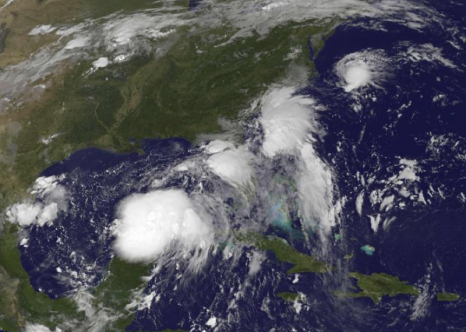
Florida and Hawaii brace as hurricane season hastens
Florida braces for life-threatening floods and fierce winds as Hawaii’s Big Island stares down the barrel of an encroaching hurricane. Forecasters issued a tropical storm warning on Wednesday for the Florida Gulf Coast. National Hurricane Center: ”Persons located within these areas should be prepared to take all necessary actions to protect life and property from rising water.” Florida Governor Rick Scott: Flooding, storm surge, fierce winds and tornadoes were all threats to the region. Could make landfall on Florida’s north-central Gulf Coast on Thursday. Resident on Hawaii’s Big Island warned of an encroaching hurricane expected to bring strong winds and heavy rains. National Weather Service (NWS): Hurricane Madeline [CAT 1] swirling about 235 miles (380 km), forecast to “pass dangerously close” on Wednesday. County of Hawaii: “Preparations to protect life and property should be completed by nightfall today.” Read the latest here 15:27
Athearn Marine Agency Boat of the Week: 37.5′ H & H Lobster boat, 300HP, 6 Cylinder John Deere
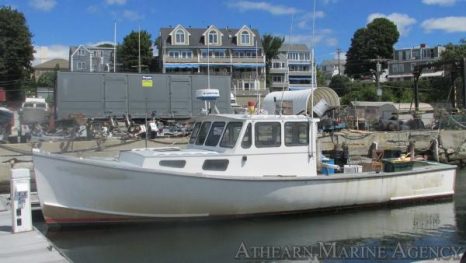 Specifications, information and 12 photo’s click here To see all the boats in this series, Click here 14:48
Specifications, information and 12 photo’s click here To see all the boats in this series, Click here 14:48
Bad outlook for upcoming Bering Sea crab fisheries
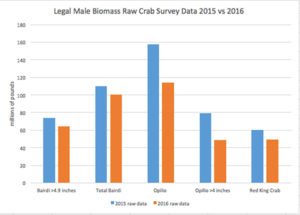 The summer survey results have not been good for either Bering Sea snow (opilio) or tanner (Bairdi) crab. For 2015-16, snow crab landings from both the IFQ and CDQ fisheries were 40.61 million pounds, a 40% cut from 67.9 million lbs in 2014-15. For Bairdi the 2015-16 quota was 19.64 million pounds, which helped make up some of the shortfall. But the snow crab market reacted quickly to the cut in Alaskan snow crab, and prices rose throughout the year, including when Canada’s larger fishery opened. Industry participants think 2016-17 may be worse. This has now been confirmed with the raw survey data just released by Dr. Bob Foy of the Kodiak Fisheries Science Laboratory showing that legal male biomass has declined in all of the major crab fisheries. Legal male biomass in the crab fisheries declined across the board, with the largest declines in Opilio. The survey also measures the abundance of female crabs; all these numbers go into determining appropriate fishing levels. Read the story here 13:43
The summer survey results have not been good for either Bering Sea snow (opilio) or tanner (Bairdi) crab. For 2015-16, snow crab landings from both the IFQ and CDQ fisheries were 40.61 million pounds, a 40% cut from 67.9 million lbs in 2014-15. For Bairdi the 2015-16 quota was 19.64 million pounds, which helped make up some of the shortfall. But the snow crab market reacted quickly to the cut in Alaskan snow crab, and prices rose throughout the year, including when Canada’s larger fishery opened. Industry participants think 2016-17 may be worse. This has now been confirmed with the raw survey data just released by Dr. Bob Foy of the Kodiak Fisheries Science Laboratory showing that legal male biomass has declined in all of the major crab fisheries. Legal male biomass in the crab fisheries declined across the board, with the largest declines in Opilio. The survey also measures the abundance of female crabs; all these numbers go into determining appropriate fishing levels. Read the story here 13:43
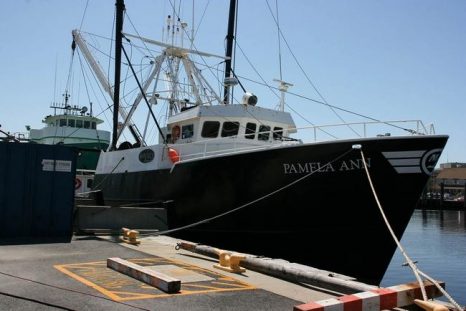
As climate changes, so do fish populations – but not rules for catching them
The problem isn’t the fish. There are plenty of fish – but they’re the wrong fish. Warming water and other shifting ocean conditions have pushed the longtime mainstays of Connecticut fishing, like winter flounder and most notably lobster, north to deeper and colder waters. In their places are species that had been more common further south, also moving north in search of more hospitable conditions. But the way the fish management and quota systems work on the East Coast, fishermen in New England can’t catch many of those fish. Instead, trawlers from North Carolina are traveling all the way to the ocean waters in Connecticut’s backyard and catching what used to be off their own coast – summer flounder, scup and the very valuable black sea bass – while Connecticut fishermen can only watch; throwback tons of fish – most of which will die; or risk a costly, difficult and long trip to where the fish they are allowed to catch in larger numbers are now. Read the story here 13:21
Hawaii fishermen upset at Hawaii monument expansion
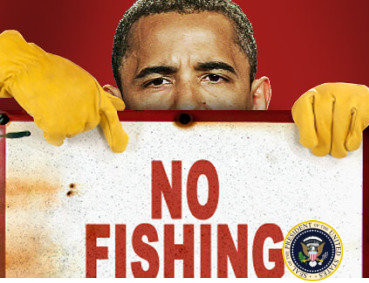 President Barack Obama is to travel to Hawaii this week to mark the new designation of the expanded Papahanaumokuakea Marina National Monument which he signed despite strong opposition from the Hawaii fishing industry. President Obama who was born in Hawaii is expected to cite the need to protect public lands and waters from climate change. The Western Pacific fishery Management Council of which American Samoa is a member voiced disappointment with Obama’s decision, saying it “serves a political legacy” rather than a conservation benefit. Council member from American Samoa Taulapapa Willie Sword told KHJ News in a recent interview the territory should be concerned with the Hawaii monument expansion because “we could be next.” There was also opposition from the fishing industry in Hawaii. Sean Martin, the president of the Hawaii Longline Association, said his organization was disappointed Obama closed an area nearly the size of Alaska without a public process. “This action will forever prohibit American fishermen from accessing those American waters. Quite a legacy indeed,” he said in an email to The Associated Press. The Pew Charitable Trusts helped lead the push to expand the monument. Read the rest here 11:39
President Barack Obama is to travel to Hawaii this week to mark the new designation of the expanded Papahanaumokuakea Marina National Monument which he signed despite strong opposition from the Hawaii fishing industry. President Obama who was born in Hawaii is expected to cite the need to protect public lands and waters from climate change. The Western Pacific fishery Management Council of which American Samoa is a member voiced disappointment with Obama’s decision, saying it “serves a political legacy” rather than a conservation benefit. Council member from American Samoa Taulapapa Willie Sword told KHJ News in a recent interview the territory should be concerned with the Hawaii monument expansion because “we could be next.” There was also opposition from the fishing industry in Hawaii. Sean Martin, the president of the Hawaii Longline Association, said his organization was disappointed Obama closed an area nearly the size of Alaska without a public process. “This action will forever prohibit American fishermen from accessing those American waters. Quite a legacy indeed,” he said in an email to The Associated Press. The Pew Charitable Trusts helped lead the push to expand the monument. Read the rest here 11:39
Northeast Fisheries Science Center is looking for one to three commercial trawl vessels
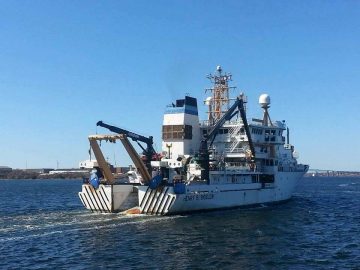 Northeast Fisheries Science Center (NEFSC) is seeking 1 – 3 commercial trawl fishing vessel partners to participate in a project related to NEFSC bottom trawl survey operations The goal of the project is to help assess the potential for collaborative industry-based trawl sampling to contribute to stock assessments of commercially important fish populations in waters of the Northwest and mid-Atlantic ocean. The project will investigate the use of industry vessels to supplement NEFSC survey sampling, and/or provide survey coverage if the FSV Bigelow is unavailable or competing uses restrict its availability for the standardized NEFSC bottom trawl survey. One to three vessels will be selected to help assess the capability of industry vessels to provide the standardized tow dynamics required to supplement the existing federal bottom trawl survey conducted on the FSV Bigelow. Read the notice, check the specs here 09:21
Northeast Fisheries Science Center (NEFSC) is seeking 1 – 3 commercial trawl fishing vessel partners to participate in a project related to NEFSC bottom trawl survey operations The goal of the project is to help assess the potential for collaborative industry-based trawl sampling to contribute to stock assessments of commercially important fish populations in waters of the Northwest and mid-Atlantic ocean. The project will investigate the use of industry vessels to supplement NEFSC survey sampling, and/or provide survey coverage if the FSV Bigelow is unavailable or competing uses restrict its availability for the standardized NEFSC bottom trawl survey. One to three vessels will be selected to help assess the capability of industry vessels to provide the standardized tow dynamics required to supplement the existing federal bottom trawl survey conducted on the FSV Bigelow. Read the notice, check the specs here 09:21
Start of the wave? Sudden boatloads of Chinook salmon off Alberni raise hopes
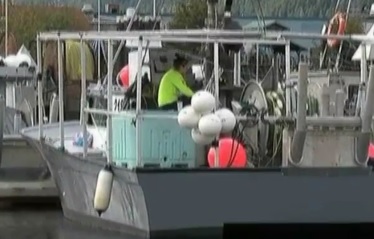 Up and down the West Coast commercial fishermen are filling harbours waiting and hoping for an opening to fish Chinook salmon. Despite preliminary estimates of a huge return, the best in decades, the fish haven’t shown up as predicted so nets that are many people’s livelihoods haven’t even gone into the water this season. But some optimism is showing up now for those who’ve been struggling. Surrounded by boats in Port Alberni’s harbour all waiting for the commercial opening for the Chinook salmon fishery Stephanie Cook is doing what she can to stop worrying. “It’s very stressful, very stressful wondering if you’re going to catch any or if there’s any out there,” says Cook aboard her boat. The 30-year-old from Alert Bay has never faced a year like this before. One that’s testing even the most experienced on this coast. Video, read the story here 08:47
Up and down the West Coast commercial fishermen are filling harbours waiting and hoping for an opening to fish Chinook salmon. Despite preliminary estimates of a huge return, the best in decades, the fish haven’t shown up as predicted so nets that are many people’s livelihoods haven’t even gone into the water this season. But some optimism is showing up now for those who’ve been struggling. Surrounded by boats in Port Alberni’s harbour all waiting for the commercial opening for the Chinook salmon fishery Stephanie Cook is doing what she can to stop worrying. “It’s very stressful, very stressful wondering if you’re going to catch any or if there’s any out there,” says Cook aboard her boat. The 30-year-old from Alert Bay has never faced a year like this before. One that’s testing even the most experienced on this coast. Video, read the story here 08:47
Starving cod – Harvesters reporting catching thin cod with little in their digestive systems
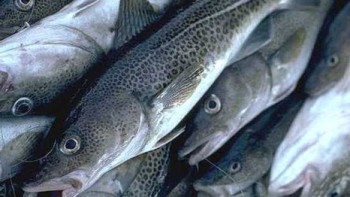 Scientists with the Department of Fisheries and Oceans are keeping a close eye on cod stocks in southern Labrador, in the wake of reports from harvesters catching fish in rough shape this season. “What we’re catching here now, it’s very poor. There’s nothing in the puttocks [digestive tract] of the fish,” fisherman Warrick Chubbs told CBC’s The Broadcast. “Only little jellyfish, the size of your thumbnail, and not many of them. The very odd one, you’ll see maybe one or two rotten shrimp.” Chubbs isn’t alone in his concerns. “It certainly seems like this year in southern Labrador the cod are not in very good condition at all,” said DFO research scientist John Brattey, who is hearing multiple similar reports from the region. Read the story here 08:26
Scientists with the Department of Fisheries and Oceans are keeping a close eye on cod stocks in southern Labrador, in the wake of reports from harvesters catching fish in rough shape this season. “What we’re catching here now, it’s very poor. There’s nothing in the puttocks [digestive tract] of the fish,” fisherman Warrick Chubbs told CBC’s The Broadcast. “Only little jellyfish, the size of your thumbnail, and not many of them. The very odd one, you’ll see maybe one or two rotten shrimp.” Chubbs isn’t alone in his concerns. “It certainly seems like this year in southern Labrador the cod are not in very good condition at all,” said DFO research scientist John Brattey, who is hearing multiple similar reports from the region. Read the story here 08:26
Never Frozen: Why It’s So Hard to Find North Carolina Seafood
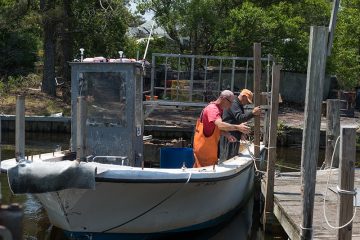 Two and a half years ago, Sean Schussler quit a six-figure job as vice president of sales for a printing company to start a seafood market. Catch On Seafood is a small shop in Plaza Midwood, a trendy Charlotte neighborhood where people drive eco-friendly cars with bumper stickers that read “Eat Local.” Schussler started the business with one guarantee: Any piece of fish he sells has never been frozen. It’s an honorable promise that’s difficult to honor. As seafood moves from the coast to the city, it passes through several hands, and often the chain is littered with stories and lies. Even some of the most highly regarded families on the North Carolina coast have sold their businesses to big companies with big distribution operations that make tracing the product impossible. Read the story here 07:52
Two and a half years ago, Sean Schussler quit a six-figure job as vice president of sales for a printing company to start a seafood market. Catch On Seafood is a small shop in Plaza Midwood, a trendy Charlotte neighborhood where people drive eco-friendly cars with bumper stickers that read “Eat Local.” Schussler started the business with one guarantee: Any piece of fish he sells has never been frozen. It’s an honorable promise that’s difficult to honor. As seafood moves from the coast to the city, it passes through several hands, and often the chain is littered with stories and lies. Even some of the most highly regarded families on the North Carolina coast have sold their businesses to big companies with big distribution operations that make tracing the product impossible. Read the story here 07:52
Undersea monument plan advocates hear fishermen’s concerns! But,,,,,,,,
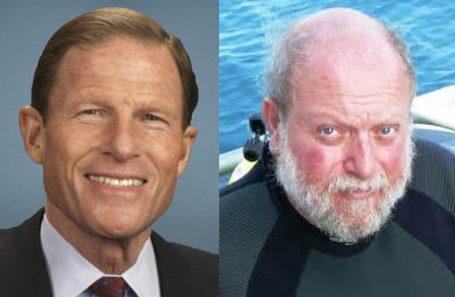 U.S. Sen. Richard Blumenthal, D-Conn., and Peter Auster, retired University of Connecticut marine science professor and currently the senior research scientist at the Mystic Aquarium, made their case for declaring the New England Coral Canyons and Seamounts as a Marine National Monument during a program Tuesday evening at the aquarium. “This would be the first marine monument in the Atlantic,” said Blumenthal, who is leading the entire Connecticut congressional delegation in advocating for the designation. Blumenthal, saying he is “sensitive to the economic interests of our fishing industry,” But commercial fishing groups say the designation would cut off their access to productive areas for red crab, swordfish, tuna and offshore lobster harvests, among other species. “Those areas have been used for hundreds of years,” said Joe Gilbert, owner of Empire Fisheries,,, “We feel disenfranchised at this point,” Gilbert said. Read the story here 05:56
U.S. Sen. Richard Blumenthal, D-Conn., and Peter Auster, retired University of Connecticut marine science professor and currently the senior research scientist at the Mystic Aquarium, made their case for declaring the New England Coral Canyons and Seamounts as a Marine National Monument during a program Tuesday evening at the aquarium. “This would be the first marine monument in the Atlantic,” said Blumenthal, who is leading the entire Connecticut congressional delegation in advocating for the designation. Blumenthal, saying he is “sensitive to the economic interests of our fishing industry,” But commercial fishing groups say the designation would cut off their access to productive areas for red crab, swordfish, tuna and offshore lobster harvests, among other species. “Those areas have been used for hundreds of years,” said Joe Gilbert, owner of Empire Fisheries,,, “We feel disenfranchised at this point,” Gilbert said. Read the story here 05:56

































